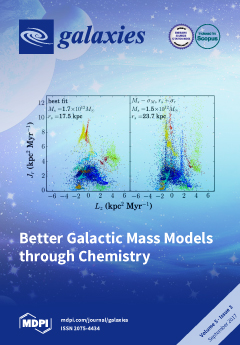Open AccessArticle
Can CMB Surveys Help the AGN Community?
by
Bruce Partridge, Laura Bonavera, Marcos López-Caniego, Rahul Datta, Joaquin Gonzalez-Nuevo, Megan Gralla, Diego Herranz, Anne Lähteenmäki, Laura Mocanu, Heather Prince, Joaquin Vieira, Nathan Whitehorn and Lizhong Zhang
Cited by 3 | Viewed by 3693
Abstract
Contemporary projects to measure anisotropies in the cosmic microwave background (CMB) are now detecting hundreds to thousands of extragalactic radio sources, most of them blazars. As a member of a group of CMB scientists involved in the construction of catalogues of such sources
[...] Read more.
Contemporary projects to measure anisotropies in the cosmic microwave background (CMB) are now detecting hundreds to thousands of extragalactic radio sources, most of them blazars. As a member of a group of CMB scientists involved in the construction of catalogues of such sources and their analysis, I wish to point out the potential value of CMB surveys to studies of AGN jets and their polarization. Current CMB projects, for instance, reach mJy sensitivity, offer wide sky coverage, are “blind” and generally of uniform sensitivity across the sky (hence useful statistically), make essentially simultaneous multi-frequency observations at frequencies from 30 to 857 GHz, routinely offer repeated observations of sources with interesting cadences and now generally provide polarization measurements. The aim here is not to analyze in any depth the AGN science already derived from such projects, but rather to heighten awareness of their promise for the AGN community.
Full article
►▼
Show Figures





